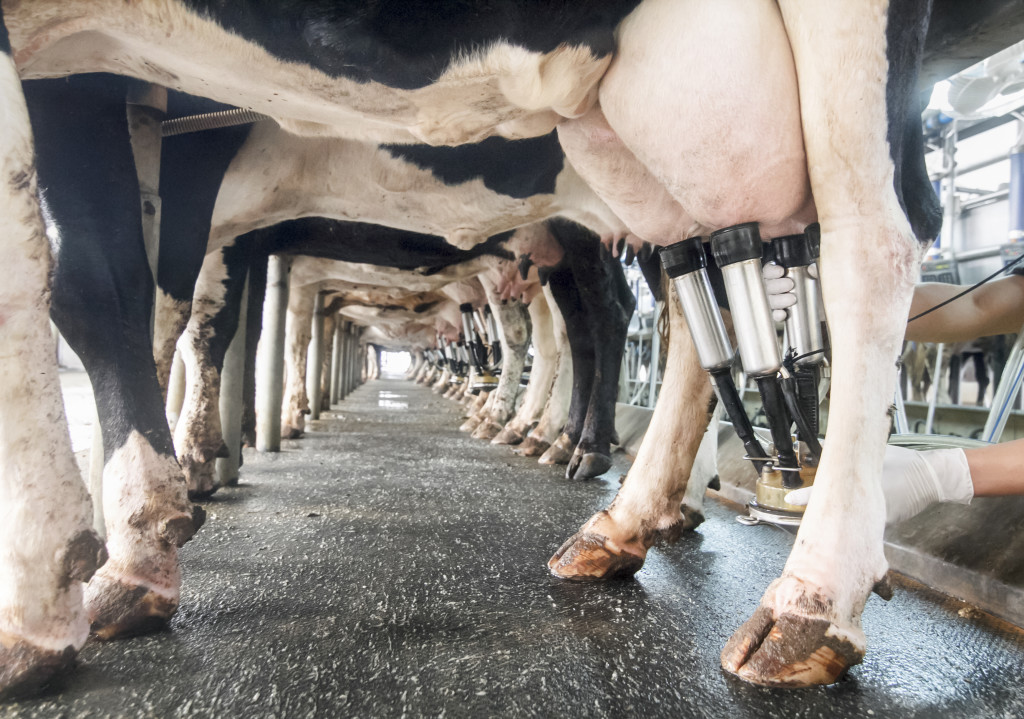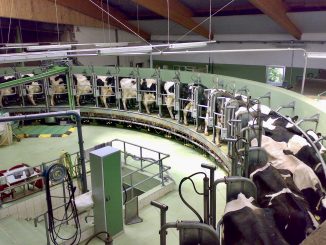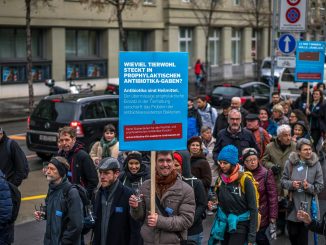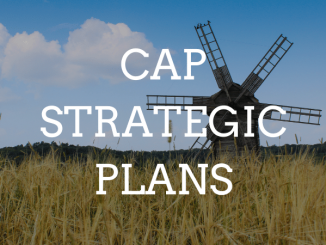
If one lives in Ireland and commentates on agriculture, a day does not pass without reading about the expansion of Irish dairying. Since the end of the milk quota regime, production growth has been rapid. One would have expected the low prices of 2015 and 2016 to have cooled the ardour, but apparently not. Add in that the Commission had to intervention stockpile milk powder and that much of Irish expansion milk has been dried, one would have expected market signals to have dulled enthusiasm. But no, we hear talk of moving onwards to 10 billion litres very soon. After all, the World population will grow and Africa or China or somebody will buy Irish dairy produce.
The writing of this article is not just because I question the rationale behind expansion. Since moving to Ireland, the sector has gone from a fodder crisis to a milk price crisis to another fodder crisis, a straw crisis and now a slurry storage and spreading crisis. That is without mentioning the on-going crises in the beef sector. Apparently, the answer to a crisis is to produce more. Nevertheless, it was the watching of two films produced by Deutsche Welle that triggered the writing of this article.
https://www.facebook.com/ARC2020eu/posts/1636598843054447?pnref=story
The first of these asked the question [is there] “too much milk in Europe?” and it focused on the plight of a long-time German ‘family-sized’ dairy farmer who was quitting because of what he was paid for his milk. Further, the documentary went on to report upon dairying in the Cameroons.
The reason for visiting the Cameroons was to highlight what impact the export of EU dairy products was having on the country’s farmers. At one point the reporter stated that more than 50% of the dairy products produced in the heartland of Cameroonian dairying were manufactured from imported milk powder. The bottom line was that local agricultural development was being inhibited by the availability of lower priced EU dairy products; be they yogurts, UHT milk or powder.
It was even more perverse to see that the milk powder was reconstituted to create yogurts both commercially and on a large ‘domestic’ scale. Worse still was that the fat within the milk powder was not the original dairy fat but palm oil, itself grown in the Cameroon, that had presumably been moved half way around the world. Apparently, milk fat is too valuable to feed to Cameroonians, so they get their dairy products made with cheaper vegetable oil. That said it is common practice to create ice cream or infant formula for sale within the EU with vegetable oils. It is a practice used to supply the cost-sensitive, mainstream markets everywhere.
It is said that EU farm support is now ‘de-coupled’. Further, the EU no longer gives export subsidies. The latter might be the case, but is the former no more than semantic? Many, many dairy farms are 100% focused on milk production, so where does the farm support payment go if it is not to support milk production? It provides income to the farm that allows the farmer to pay the bills, be they farm or household, so they are de facto, supporting the milk producer.
To take Ireland as an example, in 2016, the average direct payment was 5¼ cents per litre (cpl); and that has been ‘watered’ down by expansion. Further one should ask what is the amortized value of grants to expanding dairy farmers per litre? A grant equivalent to €1,000 per cow equates to about 2½ cpl for 10 years. And then there is the intervention costs of 400,000 tonnes of skimmed milk powder.
Taking a broader view, should the EU taxpayer be supporting an industry that is exporting to countries which have a significant reliance on agriculture? Consequently, are we ‘creating’ migrants from these far-flung rural areas? Although it is often appealing to highlight export success but should we be rather more thoughtful about how we measure success? Especially where on one side we have a subsidized, well capitalized EU dairy industry and on the other, small family farmers who are reliant on selling into their local market? It is too easy to ignore the wider consequences of the global, free-trade. More so, when the playing field is far from level.
The second DW documentary [“Putin’s farmer – Stefan Dürr”] was about a German working in Russia and operating a dozen dairy farms with 23,000 milking cows [to-date]. This came as no great surprise. Neither did the mention of how Russia is investing in agriculture and food production ‘behind’ the tit-for-tat embargoes with the EU. Being pragmatic, it is only a matter of time before Russia really gets its act together and sorts out its agri-food system and, at least, feeds itself. It is unrealistic to look at Russia with its agrarian resources as a long-term export market for all but the best of EU food products. Maybe it would be wise to assume that if the embargoes last another few years, Russia will never return as a buyer of mainstream dairy produce?
https://www.youtube.com/watch?v=hee-CPpZhwc
It was coincidental that as quotas finished the Russian embargo came in and the milk-powder-to-China boom ended. Such was the enthusiasm for milk powder at the time that something like 17 new milk driers were being commissioned around the World. Knowing such, it was no surprise that the global, as per the Global Dairy Trade, auction price went into freefall. The knock-on impact then brought about a wider milk price crash and the consequential market-support buying by the Commission to the tune of 400,000 tonnes of milk powder. It was almost a perfect storm and it was one that had serious consequences for many a milk producer.
There seem to be people within the dairy sector who believe that China an Africa will absorb any amount of EU dairy produce going forwards. It is reasoning that is often accompanied with quotes about expected global population growth. They are, however, vague statements to use when planning the future of the dairy industry. It is also not just about population growth, it is about incomes and, as seems to have been forgotten with the China boom, the supply reaction of others.
One can also add to the list of assumptions, those that relate to competitive advantage. They are themselves a changing landscape as environmental regulation focused on limiting the pollutants and emissions emanating from the sector kick in. The advantage also must be based on the full production cost and not, as in Ireland, the selection of just those costs that cast dairy farming’s economics in a positive light. Kidology has no place in strategic planning. Support payments currently provide a competitive advantage to EU dairy producers, but for how long will they withstand reform? For some EU dairy farmers there is also the indirect benefit that accrues from being a part of a cooperative processor which profits [and passes them on] from processing more than its members milk and, possibly, non-dairy diversification.
So long as there is EU support for dairy farming, it appears that the industry will continue to expand. The post-quota experience already suggests that market signals are not being followed. There was clearly a post-quota constraint reaction around as many elected to expand through the immediate price depression. And a whiff of rising prices has now triggered an upward supply trend. One would, however, not wish to see a return of milk quotas as they inhibit free decision making at the farm level. That said, someone, somewhere must find a way to connect market prices with on-farm decisions; the consequences of not doing so for too many farmers in and out of the EU are too great.
This is a challenge as it is a far from straightforward relationship. Basic economics says that as price falls, supply contracts. Either farmers will leave the industry, as is happening, or they will reduce production. One suspects that many policy makers and EU officials wish that this was the case. The on-farm decision is often rather different; it is to react to falling prices by seeking to maintain income by producing and selling more for less. With an industry populated by many farmers, the collective decision can soon trigger a downward price spiral. If those who consolidate milk within the route to market are unwilling to regulate their suppliers, a supply-driven, market calamity can soon emerge. An individual’s decision may not be in the collective or, eventually, their own interest.
One is not going to propose solutions at this stage; there are probably more than enough people at work in Brussels trying to work out how to control the EU dairy market, at least to the extent that EU taxpayers do not again have to dig deep into the pockets. With the possibility of Russia and China not returning to the market place in their previous vogues anytime soon, imaginative solutions are needed. And those solutions must not be ones that damage other dairy industries by the export of supported EU milk products that have been produced with little clear idea of their ultimate market destinations. For all dairy farmers, everywhere, the EU must ensure that its dairy sector, both farmers and processors, is market led and not, as seems to be occurring in parts, supply driven.






1 Trackback / Pingback
Comments are closed.